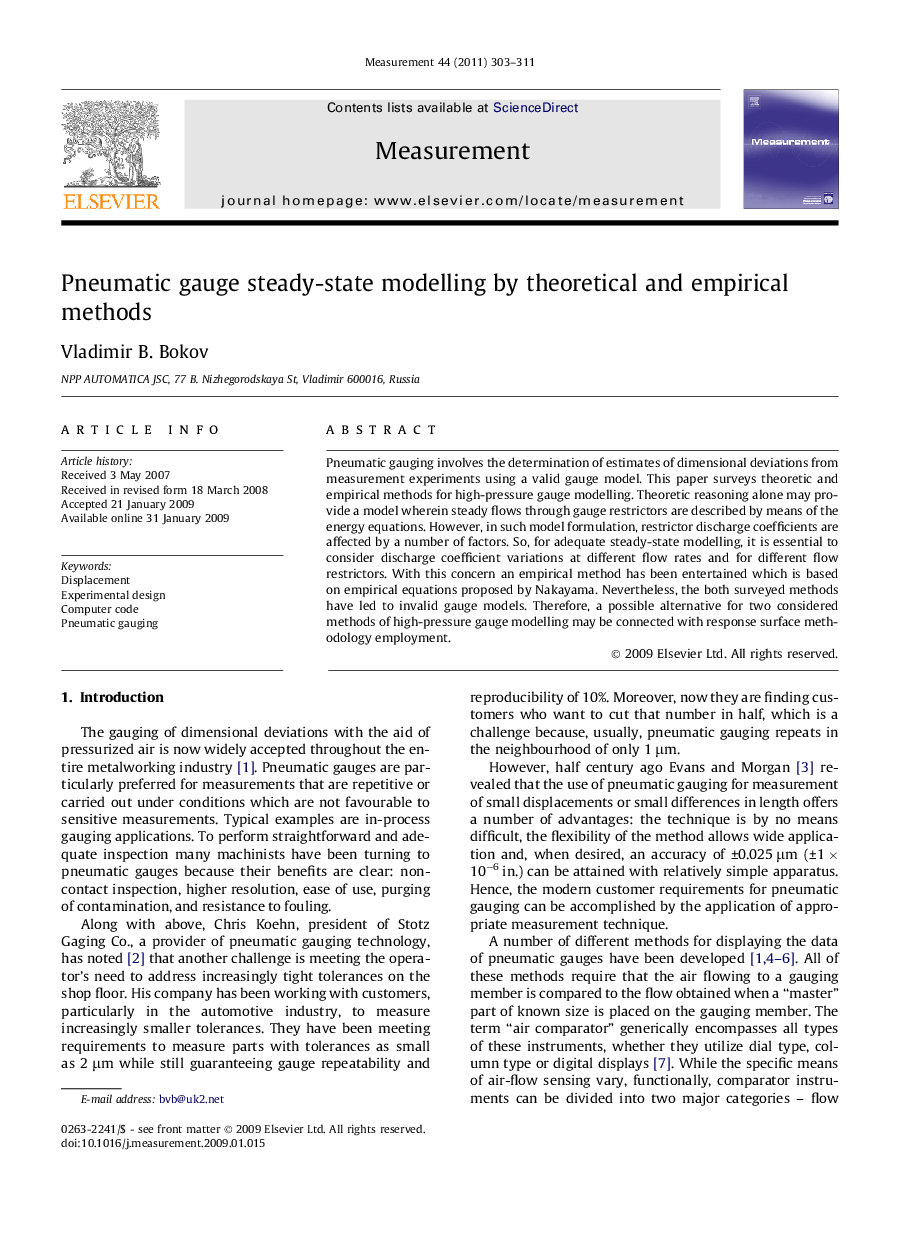| Article ID | Journal | Published Year | Pages | File Type |
|---|---|---|---|---|
| 730699 | Measurement | 2011 | 9 Pages |
Abstract
Pneumatic gauging involves the determination of estimates of dimensional deviations from measurement experiments using a valid gauge model. This paper surveys theoretic and empirical methods for high-pressure gauge modelling. Theoretic reasoning alone may provide a model wherein steady flows through gauge restrictors are described by means of the energy equations. However, in such model formulation, restrictor discharge coefficients are affected by a number of factors. So, for adequate steady-state modelling, it is essential to consider discharge coefficient variations at different flow rates and for different flow restrictors. With this concern an empirical method has been entertained which is based on empirical equations proposed by Nakayama. Nevertheless, the both surveyed methods have led to invalid gauge models. Therefore, a possible alternative for two considered methods of high-pressure gauge modelling may be connected with response surface methodology employment.
Related Topics
Physical Sciences and Engineering
Engineering
Control and Systems Engineering
Authors
Vladimir B. Bokov,
